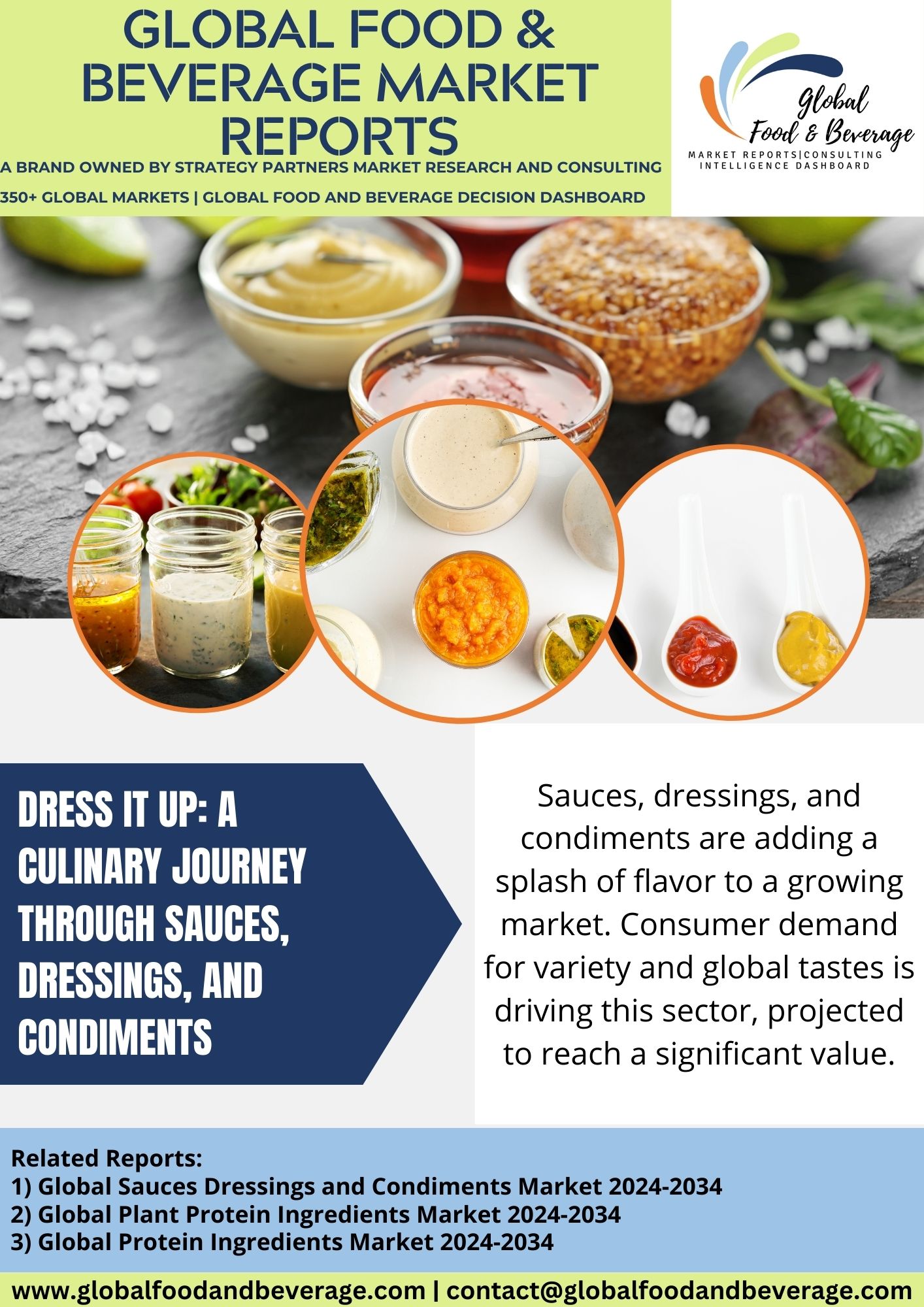Sauces, dressings, and condiments form a diverse and flavorful category of food products that elevate the taste and appeal of dishes across various cuisines. These culinary enhancements go beyond merely adding moisture or richness; they contribute nuanced flavors, textures, and visual appeal to a wide range of meals.
Sauces, which encompass everything from classic tomato-based pasta sauces to exotic international blends, serve as versatile accompaniments that can transform a simple dish into a culinary delight. Whether it’s the savory umami of soy-based sauces in Asian cuisine or the rich, creamy texture of Alfredo sauce in Italian dishes, the world of sauces is vast and varied.
Dressings play a crucial role in enhancing salads, providing not only moisture but also a burst of complementary flavors. From the zesty kick of vinaigrettes to the creamy indulgence of ranch or Caesar dressings, these additions contribute to the overall enjoyment of salads and other vegetable-based dishes.
Condiments, ranging from classic ketchup and mustard to exotic chutneys and aiolis, offer a finishing touch that can elevate the simplest of meals. They add layers of taste, tanginess, or spiciness, turning ordinary sandwiches, burgers, or grilled meats into satisfying culinary experiences.
In recent years, the world of sauces, dressings, and condiments has witnessed a surge in innovation, with a focus on diverse flavor profiles, natural ingredients, and healthier formulations. Artisanal and small-batch producers have gained popularity, offering unique and handcrafted options that cater to evolving consumer tastes and preferences.
The global appeal of sauces, dressings, and condiments reflects the rich tapestry of culinary traditions worldwide. As consumers become more adventurous and diverse in their food choices, the market continues to evolve with new and exciting flavor combinations, accommodating a spectrum of tastes from traditional to contemporary. In essence, these culinary companions play a central role in transforming everyday meals into gastronomic experiences.
ADVANCEMENT:
The sauces, dressings, and condiments sector has experienced notable advancements, reflecting a dynamic interplay of culinary innovation, consumer preferences, and health-conscious trends. One key development is the expansion of diverse flavor profiles and ingredient choices. Manufacturers are incorporating global culinary influences, exploring unique combinations of herbs, spices, and ethnic flavors, providing consumers with a broader and more adventurous taste experience.
Advancements in formulation technologies have contributed to healthier options in this category. The incorporation of natural and functional ingredients, such as plant-based alternatives, reduced sugar formulations, and clean label options, aligns with the increasing demand for healthier and more transparent food choices.
Packaging innovations also play a crucial role in the sector’s evolution. The introduction of sustainable packaging materials and user-friendly dispensing options addresses environmental concerns while enhancing convenience for consumers.
Furthermore, the rising popularity of ethnic and specialty sauces represents a significant trend. From Korean gochujang to Middle Eastern tahini-based dressings, the market has diversified, reflecting the growing appreciation for global culinary influences and the desire for more unique and authentic flavor experiences.
CHALLENGE:
Sauces, dressings, and condiments face several challenges in the global food industry. One significant challenge is the balance between taste and health considerations. Consumers increasingly seek healthier options with reduced sugar, salt, and preservatives, challenging manufacturers to reformulate traditional recipes while maintaining the desired flavor profiles that consumers expect.
Ingredient sourcing and supply chain complexities impact the industry. Many sauces, dressings, and condiments use a diverse range of ingredients, and ensuring a stable supply chain for these components can be challenging. Fluctuations in agricultural production, weather conditions, and geopolitical factors can influence the availability and cost of key ingredients.
Regulatory compliance and labeling complexities add to the challenges. Different regions have varying regulations regarding food labeling, nutritional claims, and permissible ingredients. Navigating these diverse standards requires manufacturers to invest in compliance expertise to ensure market access and consumer trust.
Packaging and sustainability concerns are growing challenges. Consumers are becoming more conscious of the environmental impact of packaging materials. Striking a balance between preserving product quality and adopting eco-friendly packaging solutions is a significant challenge for the industry.
Consumer preferences and customization pose ongoing hurdles. Preferences for ethnic flavors, diverse dietary requirements, and demand for clean label products challenge manufacturers to offer a wide variety of options. Providing customization while maintaining efficiency and cost-effectiveness is a continuous challenge.
Market competition and pricing pressures influence the industry. The sauces, dressings, and condiments market is highly competitive, with various brands offering diverse formulations. Price fluctuations, influenced by factors like raw material costs and market demand, can impact the affordability and profitability of these products.
CONCLUSION:
In conclusion, the global market for sauces, dressings, and condiments remains vibrant, reflecting dynamic shifts in consumer tastes and culinary preferences. The industry thrives on innovation, with diverse flavors, clean label ingredients, and healthier formulations gaining prominence. As consumers seek convenient and unique taste experiences, the market responds with a plethora of options. Global cuisines and a growing interest in ethnic flavors further drive the demand for versatile condiments. Health-conscious choices and sustainability concerns shape product development, presenting ongoing opportunities for the industry. With an ever-evolving culinary landscape, sauces, dressings, and condiments continue to play a crucial role in enhancing the flavor and appeal of diverse cuisines worldwide.
